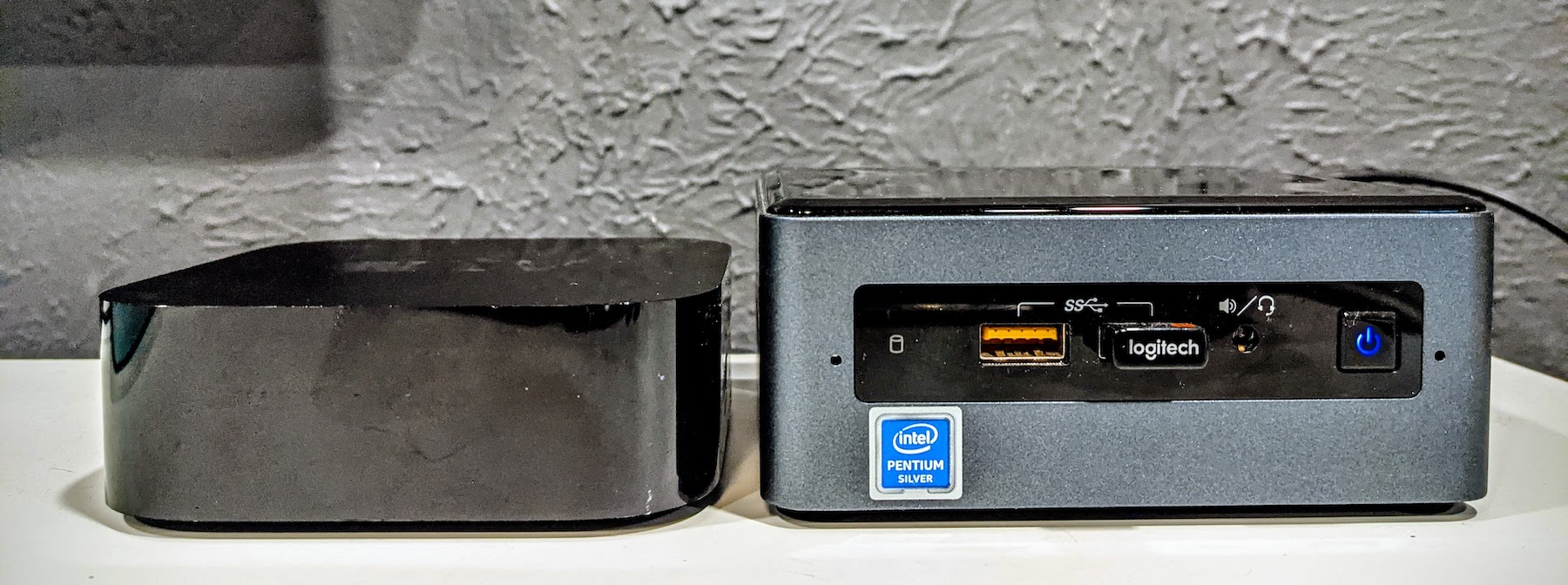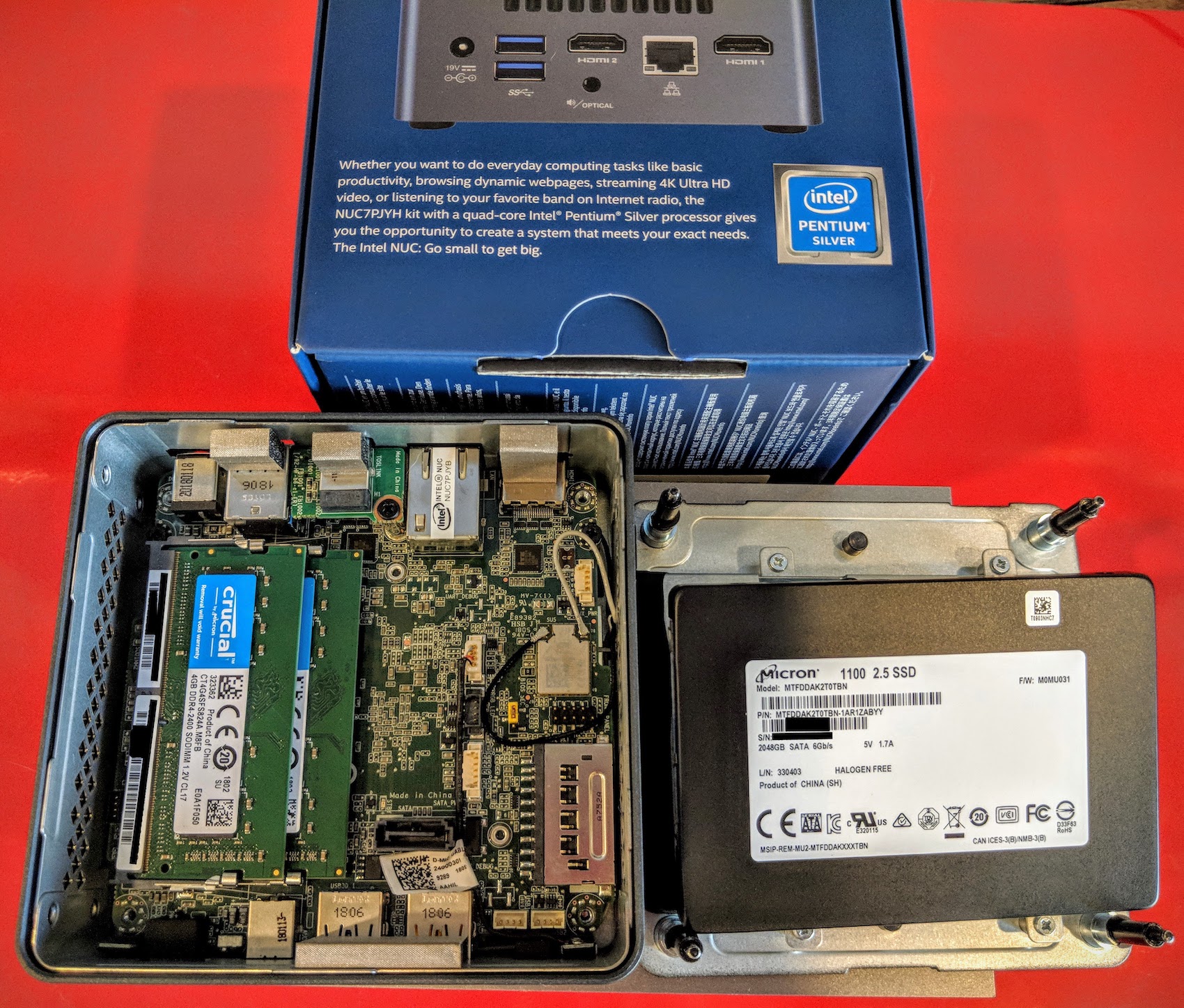The main goal for this build is a server system with ultra-low power consumption and 4K HDMI output, as well as PLEX video streams for friends and family. Below is a size comparison with the AppleTV (4K). As you can see, it’s super-tiny.

After tinkering with some storage and server functions on Raspberry Pi, I decided I needed something a bit more powerful. This machine is powered by the Pentium Silver (J5005). Loaded with a 2 TB SATA SSD and 8 GB of RAM, it makes for an ideal home theater PC, PLEX media server, centralized backup, and iTunes server.
Although Intel claims to support a maximum of 8 GB of RAM (shared with the iGPU), it unofficially handles 16 GB (2×8 GB sticks of DDR4-2400) and remains solid. Worth noting that all the services mentioned before ran just as quickly with 8 GB.

While the Pentium brand harkens back to 90s nostalgia, the quad-core chip performs admirably as a server or home theater PC. Compatibility with Intel QuickSync Video means it can transcode multiple streams of 10-bit HDR video at 4K (encoded with h.265) using PLEX. It also does it guilt-free, usually consuming only 6 watts. In the old days, nightlights used 7 watt incandescent bulbs.
And low power consumption should really be the name of the game with a home server. If it runs 24/7, it should sip power and generate as little heat as possible. Building a full index on NTFS with Windows can use around 50-60% of the CPU, but there’s no rush here. Unlike your laptop, it doesn’t stop working when you close the lid.
Parts cost for this configuration is around $600 (USD) at the time of writing. The J5005 is adequate for casual use as a desktop, but intense multi-tasking or graphical tasks (like video or photo editing) will make it chug. For Steam games older than 7-10 years, it can sometimes run them at 1080P, and a few at 4K. Console emulation is no sweat.
If your primary machine is a laptop with minimal storage or Chromebook, this machine will be handy for things that download or upload slowly because of slow servers or large file sizes. We like to use it for downloading massive things like map updates for the Hyundai navigation system (typically around 20 GB) because of the SD card slot and massive internal storage.
